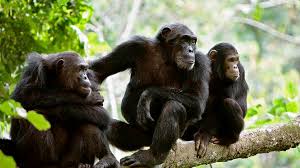- Arusha
- info@naturebaysafari.com
- +255 621 837 693
Tarangire National Park
Overview
Tarangire National Park is one of the most iconic wildlife reserves in Tanzania, located in the northern part of the country, near the city of Arusha. It is renowned for its diverse ecosystems, rich wildlife, and stunning landscapes. The park is a popular destination for tourists, especially those interested in safaris, due to its impressive wildlife sightings and distinctive landscapes.
Geography and Location
Tarangire National Park covers approximately 2,850 square kilometers (1,100 square miles) and is situated about 120 kilometers (75 miles) southwest of Arusha. It is part of the greater northern safari circuit, often included in itineraries with Serengeti National Park, Ngorongoro Crater, and Lake Manyara National Park. The park lies on the edge of the Great Rift Valley, offering panoramic views of the surrounding plains and distant mountains. It is named after the Tarangire River, which flows through the park and provides a vital water source for the animals, especially during the dry season.
Wildlife
Tarangire is particularly known for its large herds of elephants, which roam the park in impressive numbers, particularly in the dry season. The park is home to the largest population of elephants in northern Tanzania, with over 3,000 individuals. In addition to elephants, the park is a haven for various other wildlife species, including:
- Big Cats: Lions, leopards, and cheetahs are commonly seen in the park, hunting or resting in the savannah.
- Other Mammals: Tarangire supports a variety of mammals such as giraffes, zebras, wildebeests, impalas, gazelles, buffalos, and hartebeests.
- Birdlife: With over 500 species of birds, the park is a birdwatcher's paradise, with highlights including the endangered yellow-collared lovebird, secretary birds, and a variety of raptors.
Landscape and Vegetation
The landscape of Tarangire is diverse, ranging from open savannas to acacia woodlands, dense baobab forests, and swamps. The park is famous for its distinctive baobab trees, often referred to as "upside-down trees" because of their appearance with roots pointing upwards. These ancient trees are scattered across the park and provide shelter for various bird species.
During the wet season (November to May), the park is lush and green, with a variety of flowering plants. However, during the dry season (June to October), the vegetation thins out, and animals gather around the Tarangire River, creating excellent opportunities for wildlife viewing.
Climate
Tarangire has a tropical climate, characterized by two distinct seasons: the wet season (from November to April) and the dry season (from May to October). The dry season is the best time to visit the park for wildlife viewing, as the animals tend to concentrate around the water sources, making it easier to spot them. Temperatures can range from 20°C (68°F) to 30°C (86°F) during the day, cooling off in the evenings.
Activities
Visitors to Tarangire National Park can enjoy a variety of activities, including:
- Game Drives: The most popular activity in the park, where tourists can observe wildlife up close in the comfort of a safari vehicle. Morning and afternoon drives are typically the best for spotting animals.
- Bird Watching: With a wide range of bird species, Tarangire is an excellent location for bird enthusiasts, especially during the migratory season.
- Walking Safaris: Guided walking safaris offer a more intimate experience, allowing visitors to explore the park on foot and learn about the smaller details of the ecosystem.
- Photography: The park’s diverse wildlife and dramatic landscapes provide great opportunities for photographers.
Accommodation
Tarangire offers a variety of accommodation options for visitors, ranging from luxury lodges and tented camps to budget-friendly options. Many of the accommodations are located on the outskirts of the park or within its boundaries, providing easy access to the main attractions. Some of the luxury camps offer exclusive, intimate experiences with personalized safari services.
Best Time to Visit
The best time to visit Tarangire National Park is during the dry season, from June to October. This is when wildlife is most concentrated around the river and waterholes. However, if you are a birdwatcher, the wet season (November to April) offers a unique opportunity to see migratory species and the park’s lush, green landscape.
Conservation and Challenges
Tarangire National Park is an important conservation area in Tanzania, contributing to the protection of key species such as elephants, lions, and giraffes. However, the park faces challenges such as poaching, human-wildlife conflict, and the encroachment of agricultural activities surrounding its borders. Efforts are being made to protect the park’s wildlife, and various conservation programs are in place to preserve its unique ecosystems.
Conclusion
Tarangire National Park offers an unforgettable safari experience, with its impressive wildlife, diverse landscapes, and unique natural beauty. Whether you're an avid wildlife enthusiast, a birdwatcher, or simply someone looking to experience the African wilderness, Tarangire provides a stunning and rewarding destination.







